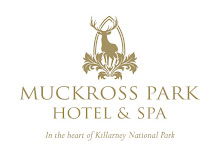To Be Finished...
Our ancestors needed to defend themselves from hostile tribes and wild animals so they built simple wooden defenses around their dwellings. Sometimes these dwellings would be on a lake or in a marsh, making it even more secure, such as a crannog.
Imagine those long dark Irish nights when the world abound still with witchcraft and mysteries. Falling rain, wailing wind, trees crashing and creaking, the roar and shriek or hunting and hunted animals. Around a fire would cluster our ancestors, dozing with simple weapons ready, while beyond their wooden, or wattle and daub, defenses lurked other nervous tribes, semi-crazed wanderers, wolves, boar, elk and possibly bear.
The Iron Age and Bronze Age saw impressive stone ring forts, hill look-out forts and earthen clifftop forts,
In western Europe the first castles begin appearing in the 9th and 10th century. Local chieftains built wooden ring-works on top of earthen banks, which were encircled with deep ditches.
In 1066 William of Normandy conquered England and to safeguard and subdue the displaced Saxons he filled England with a new castle design he had developed in Normandy. This new castle design was called a motte and baily castle.
Within one hundred years of Norman conquest about six hunded of these castles had been built in England and Wales. Motte and baily castles were often built hurredly as part of the wave of invasion. These were then converted into stone over time, which was a slow process.
In 1169 the Norman invasion of Ireland began. With the Norman arrival on Irish soil came their timber motte and baily castles, followed by longer lasting stone castles, known as a stone keep castle.
The concentric castle arrived in the late 13th century, the idea being brought back from the Holy Land by returning crusader knights.
5 October 2014
Subscribe to:
Post Comments (Atom)
















No comments:
Post a Comment